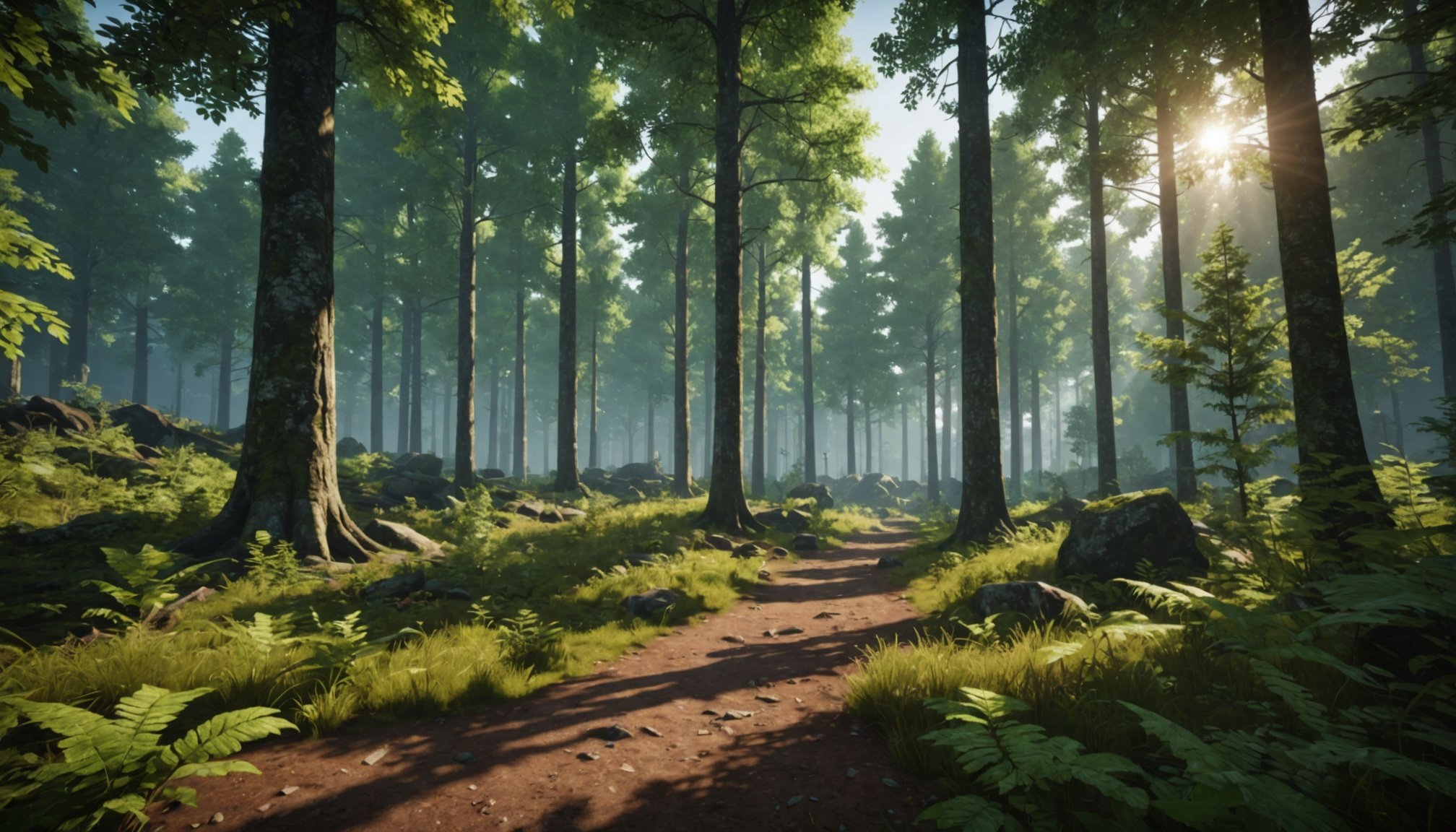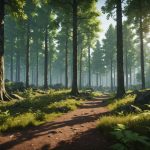Techniques for Designing Realistic Forest Landscapes
Designing a realistic forest landscape requires meticulous attention to detail and a deep understanding of landscape architecture. At the core of creating lifelike foliage is the technique of layering. This involves arranging various plant elements in tiers, from the forest floor upwards, to mimic natural growth patterns. When utilizing these foliage techniques, introducing variety is paramount. Different species, sizes, and shapes of plants contribute to diversity, breaking monotony and heightening realism.
Natural color palettes further enhance the authenticity of a forest design. Opting for colors that mimic those found in real-life forests evokes a sense of familiarity and immersion. Earthy tones, gradients of green, and seasonal foliage hues all play a crucial role. Through these tactics, one can create environments that feel vibrant and alive.
Have you seen this : Exploring celestial frontiers: overcoming physics challenges in space simulation gaming
In addition, blending various elements—such as rocks, streams, and understory bushes—strengthens the ecosystem’s believability. Combining these techniques results in landscapes that captivate and transport players, enriching their gaming experience. Effective landscape architecture not only beautifies a game but also deepens the emotional connections players form with the environments they explore.
Examples of Successful Forest Designs in Exploration Games
In the realm of game design examples, a well-crafted forest landscape significantly enhances the player’s experience by fostering truly immersive environments. One notable case study is the forest in “The Last of Us Part II”. Here, designers used intricate details and realistic foliage to create an atmosphere of tension and beauty. A focus on variability in tree species and natural lighting guided players through the story. This approach cemented players’ immersion, driving a strong emotional response.
Also to see : Enhancing education: innovative ways to integrate augmented reality into scavenger hunts
Analysis of “Breath of the Wild” and Its Foliage
“Breath of the Wild” embraces a balance between realistic forest design and fantasy, using foliage techniques to foster exploration and wonder. The game deftly harnesses artistic styles, blending realism with stylized elements to guide player movement subtly and stimulate curiosity.
Lessons from “Firewatch” for Atmospheric Forest Settings
The ambient design in “Firewatch” offers valuable insight into creating compelling forest environments. By focusing on visual storytelling and atmospheric sounds, “Firewatch” excels in conveying a story without overt narrative cues. These forests become integral to the game’s emotional tapestry, offering an immersive environment that heightens player connection. This showcases how successful designs resonate with players on a deeper level, intertwining gameplay and environment seamlessly.
Software Tools and Resources for Designing Forest Landscapes
Creating convincing forest landscapes in games relies heavily on the right design software and game development tools. Unity and Unreal Engine lead the pack, offering robust capabilities for rendering complex, realistic environments. With Unity’s user-friendly interface and Unreal’s high-fidelity graphics, they cater to both beginners and professionals in game development.
To enhance foliage creation, essential plugins and assets like Unity’s Vegetation Studio Pro or Unreal’s Megascans library are invaluable. These tools provide pre-made, adjustable plant and terrain assets that save time while allowing for customization, adding depth and detail to digital forests effortlessly.
For those aiming to refine their skills, plenty of learning resources are available. Online platforms such as Coursera and Udemy offer courses focused on environmental design, while forums and community groups like ArtStation provide networking and feedback opportunities.
Embracing these tools and resources not only aids in crafting realistic landscapes but also empowers designers to push the boundaries of landscape architecture, ensuring that each forest is a unique, immersive experience for players.
Artistic Styles and Their Impact on Forest Design
Exploring artistic styles in forest design reveals a spectrum of possibilities that impact both visual storytelling and player engagement. When comparing realistic and stylized forest aesthetics, it’s crucial to understand how each approach shapes player experience. Realistic styles rely on attention to detail and mimicry of natural elements, crafting environments that resonate with authenticity and familiarity. In contrast, stylized designs leverage abstraction and exaggeration to create unique worlds that highlight artistic vision and imagination.
The role of artistic direction extends beyond aesthetics, influencing how players interact with and perceive a game’s environment. Thoughtful choices in palette, scale, and form can subconsciously guide player movement, evoke emotions, and enhance storytelling, creating enriched immersive experiences.
Cultural influences heavily dictate design choices, infusing forests with unique regional characteristics and narratives. These influences reflect in architectural elements, flora types, and color schemes, embedding cultural tales and practices into game landscapes. This interplay between style and story can elevate a game’s narrative depth, inviting players to explore beyond the surface of their surroundings and engage with a layered world narrative. Thus, combining stylistic choices with storytelling crafts deeply immersive and impactful forest environments.
Practical Tips for Environmental Storytelling through Foliage
In crafting environmental storytelling, foliage plays a pivotal role in narrative through design. Foliage not only enhances the visual appeal but also communicates stories seamlessly. Integrating narrative elements with plants can profoundly impact immersive gameplay.
Examples of Storytelling Techniques in Forest Settings
Expertly designed forests incorporate elements that guide players subtly, enhancing the narrative. By using flora varieties and patterns, developers create pathways that mirror the story’s progress, encouraging exploration and discovery.
Using Foliage to Direct Player Movement
Strategic placement of trees and shrubs influences how players move and interact with their surroundings. Foliage guides, such as narrowing paths or forming arches with branches, naturally direct players, enhancing engagement with the narrative without disrupting gameplay flow.
Enhancing Emotional Narratives with Environment
Foliage can evoke emotions and reinforce thematic elements within the game. For instance, vibrant flowers may represent hope, while bent and twisted trees might symbolize despair. This thoughtful use of plants ensures the environment becomes an active participant in unfolding the story, fostering a deeper connection between player and setting.











